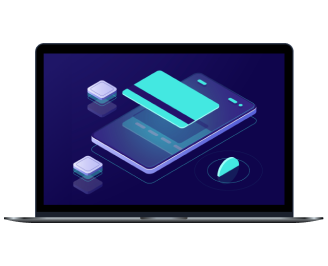Increasing user engagement for a digital banking application
Learn how we helped our client increase user engagement for a digital banking application, reduce the number of fraud attacks, and ensure stable and frequent product releases.
-
industry
FinTech
-
Country
USA
-
team size
>10 IT experts
-
Implementation
July – October 2021
About the client
Our client is a US-based FinTech company that provides digital banking services to their customers via a mobile banking app developed by an in-house team. The company is a post-seed startup that has successfully passed through the death valley curve phase.

Business context
The client’s app experienced multiple performance and security problems, and users did not take advantage of all the features, resulting in a lack of revenue. But the company had limited resources to identify the causes of these problems and come up with effective solutions. That’s when Yalantis stepped in.
First of all, we assessed the digital banking project and identified two of the biggest issues the client was struggling with:
- Insufficient quality of the user base. Even though the user base was growing rapidly, the quality and engagement of users weren’t satisfactory. Additionally, constant fraud attacks intensified user attrition.
- Lack of technical excellence. Our client was unable to release often and independently, as they lacked the fault-resistant infrastructure to run their product live in the sensitive FinTech domain.
Solution overview
-
Redesigning the app to make it more appealing and convenient
When we began our cooperation, the client had not yet implemented user behavior analytics. We analyzed app users’ feedback to reveal gaps in the UI/UX. Our aims were to improve the app’s look, make the app helpful in daily digital banking operations, and boost customer satisfaction. To achieve them, we:
- simplified the design of particular app components to make them more intuitive
- added light and dark modes to match users’ UI preferences
- implemented gamification elements to encourage users to finish onboarding and continue using the app
- provided interactive spending statistics and financial reporting so users could efficiently manage their finances
- introduced gamification-based loyalty programs with bonuses and cashback
- implemented a questionnaire for users to rate the application’s convenience after using key features
- integrated a chatbot for fast and efficient customer support
-
Ensuring system stability
To ensure the system’s availability and persistence as well as fault tolerance and performance, we:
- built a multi-region active standby architecture on AWS — in case of failure in one region, the system automatically falls back to another region where infrastructure is in standby mode
- integrated load balancers and ensured automatic scaling (adjustment of system capacity)
-
Streamlining the security management system
To ensure reliable system security, the Yalantis team implemented:
1. General system access management and distribution
- We implemented different APIs for end users and the engineering team to monitor system access on the physical level.
- Each service has its own database instance and cannot access data in the instances of other services.
- The system is segmented into subnets so that system components on different levels can’t connect with each other except through configured communication channels.
2. System access validation through integrations
- The Web Application Firewall (WAF) protects the system from DDoS attacks, filters suspicious data packages, and limits the frequency of access requests.
- A Content Distribution Network (CDN) protects the system from DDoS attacks through load balancing.
3. Data encryption
- For encrypting data at rest, we integrated into the cloud environment third-party encryption systems that use the standard AES-256 algorithm.
- To encrypt data in transit, we used the traditional HTTPS protocol and SSL/TLS certificates, which are also managed in the cloud.
-
Enhancing the risk management system
For our client’s application, risk management involves the following:
- Verifying customer data (address, phone number, documents)
- Building a customer risk profile based on a number of measures such as transaction history and credit score
We facilitated customer verification and the building of customer risk profiles by implementing:
- KYC (Know Your Customer) and KYB (Know Your Business) procedures
- AML/fraud detection/online transaction monitoring
- Credit score validation
- Phone/address verification
- Risk engine for making decisions on providing services to different customers based on their risk profiles
We also implemented risk analysis of users, which included:
- limiting the number of bank accounts created from a single device over a certain period of time
- measuring the speed of signing up to detect fraudulent activities; if it takes only a few seconds, for instance, most likely it’s done by a fraudulent automated algorithm
- analyzing user behavior patterns; if there are only actions required to get bonuses, for instance, it looks suspicious
- monitoring suspicious transactions within set limits (e.g. a thousand $1 transactions per day)
-
Accelerating software deployment
To accelerate deployment, our DevOps team:
- implemented the GitOps paradigm
- transitioned to Kubernetes
- conducted load testing of microservices
This allowed us to:
- reduce the number of failed releases
- ensure uninterrupted work with the application even during code deployment
- maintain stable app performance during high loads
- ensure a quick rollback if necessary to change something in the code
-
Engaging data analytics and business intelligence
We implemented data analytics and business intelligence (BI) tools for:
- detecting users that have not completed the sign-up process to retarget them with personal emails
- segmenting users to provide more personalized services
- tracking crucial financial metrics of the business (LTV, churn rate, daily and monthly active users)
- building algorithms and identifying patterns for efficient fraud detection
- tracking features popular among users with high LTV to prioritize functionality for future updates
Building an app referral system with motivational rewards
To help our client increase the app’s reach and optimize their customer conversion funnel, we offered to implement a referral system. To make the system bring results faster, we enabled the integration of contact lists into customers’ accounts.
As a result, there are two types of rewards in the referral system:
- A reward for both the inviter and invitee for signing up
- A reward for both the inviter and invitee if the invitee performs certain target actions (such as splitting payments or trying out other specific functionality)
Value delivered
-
30 percent increase in the flow of new customers with the help of the referral system
-
Improved customer retention thanks to a convenient and attractive UI/UX
-
More customers with high LTV thanks to the enhanced customer engagement program
-
Fewer security issues with the help of a reliable software architecture and risk management system
-
Efficient monitoring of app performance and improved decision-making thanks to data analytics and business intelligence
DEVELOP A USER-CENTRIC DIGITAL BANKING PRODUCT
Yalantis will help you cover all user needs, provide stable performance, and design an intuitive and user-friendly software experience
More projects
-

Business intelligence for banking
Business intelligence for improved operational efficiency and cost optimization
-

KYC/KYB implementation
Implementing KYC/KYB for user and business verification and fraud prevention
-

Automated cybersecurity ecosystem
A solution for automatically detecting software vulnerabilities